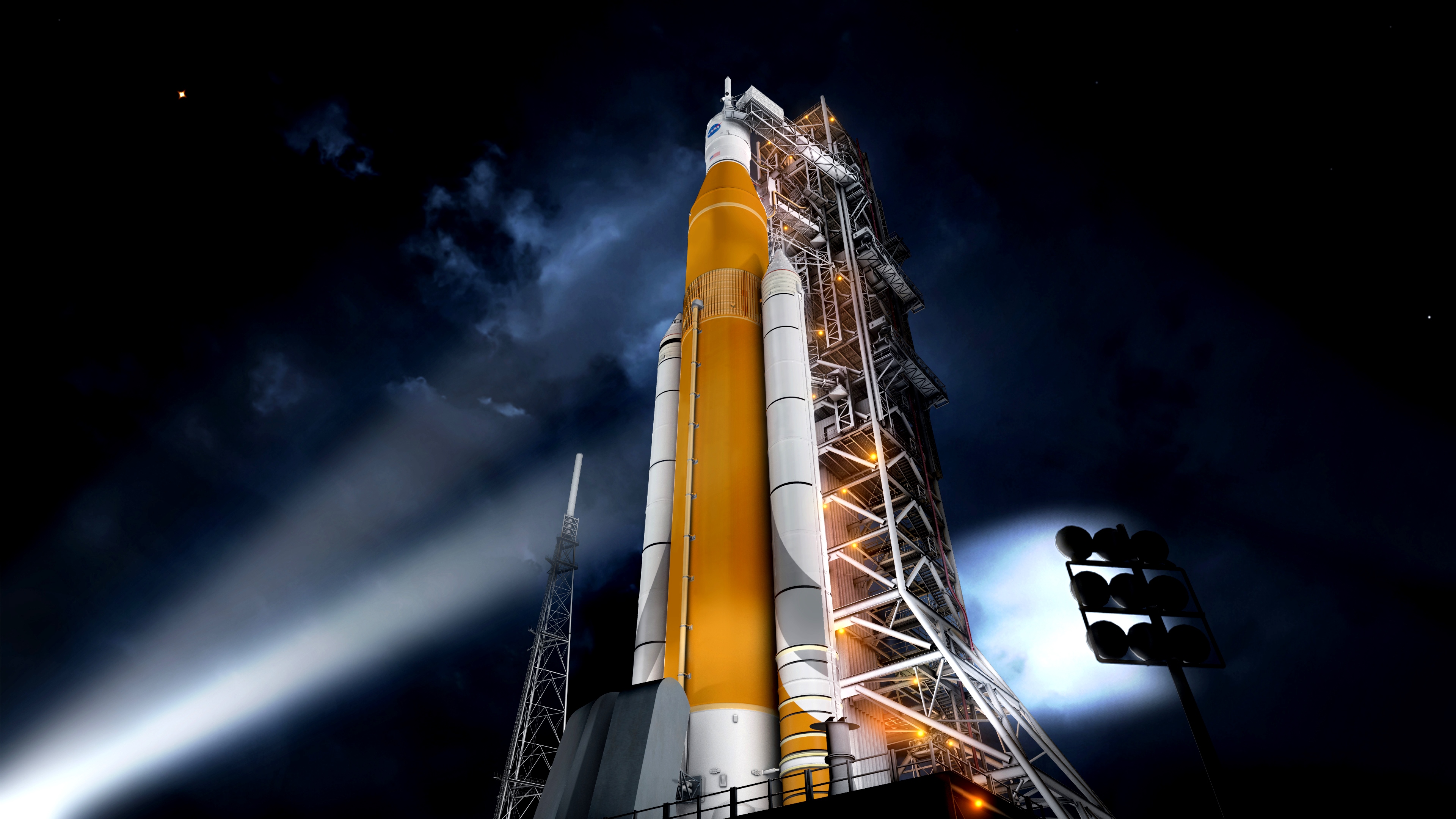Test Tank for NASA Heavy-Lift Rocket Damaged in Louisiana

A Space Launch System (SLS) fuel tank needed for structural tests in advance of the debut flight of NASA's heavy-lift booster was damaged on May 3, the space agency said today (May 11).
The accident at NASA's Michoud Assembly Facility in New Orleans is under investigation, said agency spokeswoman Kim Henry.
NASA has not yet determined if the damage will affect the schedule of the maiden SLS flight, whose November 2018 launch date was already in doubt, the agency said. [Photos: NASA's Space Launch System for Deep-Space Flights]
"Initial assessments indicate damage to the rear (aft) dome of a liquid-oxygen tank, which is part of the rocket's 212-foot [65 meters] core stage," NASA said in a statement. "Assessments are underway to determine the extent of the damage."
Henry declined to describe the physical damage or provide details of the accident, which occurred as the 27.6-foot-diameter (8.4 m) dome was being prepared to be welded to the rest of the tank.
"It's the last piece you need when you're welding the liquid oxygen tank," Henry said.
The tank was due to be shipped to NASA's Marshall Space Flight Center in Huntsville, Alabama, for testing to ensure it can withstand the stresses of launch. NASA has already completed a liquid-hydrogen tank for qualification testing, Henry said.
Get the Space.com Newsletter
Breaking space news, the latest updates on rocket launches, skywatching events and more!
NASA last month confirmed findings from a U.S. Government Accountability Office (GAO) report that the debut test flight of the SLS, a heavy-lift booster intended to pave the way for eventual human missions to Mars, would be delayed until at least early 2019.
"We agree with the GAO that maintaining a November 2018 launch-readiness date is not in the best interest of the program, and we are in the process of establishing a new target in 2019," William Gerstenmaier, associate administrator for the Human Exploration and Operations Directorate at NASA Headquarters in Washington, D.C., wrote in a letter responding to the GAO report.
NASA's Office of Inspector General (OIG) reached a similar conclusion in an audit completed last month.
"NASA's first exploration missions — EM-1 and EM-2 — face multiple technical challenges that will likely delay their launch," the OIG report said, referring to the first two SLS flights.
Before the May 3 accident, the key issues threatening the first SLS launch were delays in developing the Orion capsule's service module by the European Space Agency and tornado damage to buildings at Michoud, where the rocket's core stage is being built.
The Trump administration has asked NASA to consider adding a crew to what is currently planned as an uncrewed SLS-Orion test flight around the moon. The results of NASA's study have not yet been released.
Follow us @Spacedotcom, Facebook or Google+. Originally published on Space.com.
Join our Space Forums to keep talking space on the latest missions, night sky and more! And if you have a news tip, correction or comment, let us know at: community@space.com.

Irene Klotz is a founding member and long-time contributor to Space.com. She concurrently spent 25 years as a wire service reporter and freelance writer, specializing in space exploration, planetary science, astronomy and the search for life beyond Earth. A graduate of Northwestern University, Irene currently serves as Space Editor for Aviation Week & Space Technology.









